

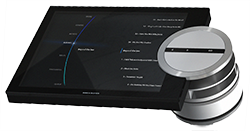 The long anticipated BeoSound 5 was announced yesterday. In terms of surprises the only one appears to be the release timing, in so far that it does not show much novelty over its competition in this segment. One major feature, though, is a system which based on metrics* is capable of selecting other songs similar to the one just finished. More of the same, as it is aptly named. I fear, however, that an equally fitting name could turn out to be Name that influence; when seeded with some middle of the road country tune it starts playing 2.000 hours worth of songs only distinguishing themselves from the seed track by lyrics and cover art.
The long anticipated BeoSound 5 was announced yesterday. In terms of surprises the only one appears to be the release timing, in so far that it does not show much novelty over its competition in this segment. One major feature, though, is a system which based on metrics* is capable of selecting other songs similar to the one just finished. More of the same, as it is aptly named. I fear, however, that an equally fitting name could turn out to be Name that influence; when seeded with some middle of the road country tune it starts playing 2.000 hours worth of songs only distinguishing themselves from the seed track by lyrics and cover art. 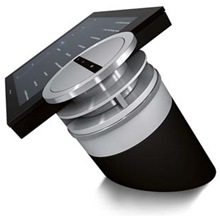 Well, I guess it can be turned off.
Well, I guess it can be turned off.
Looks are, expectedly, nice as always as is the user interface and means of operation. No easy solutions there. A nifty three-piece scroll/toggle-wheel operates the navigation system. An internal 500GB hard drive makes for storage and a 10.4” crystal clear monitor informs you of all you need to know.
Once I know the specs in detail [Flac, uPnP, resolution etc.] I will update this article. Let’s just hope the specs will have something substantial to show. Comparing the BeoSound 5 with some of the other players on the market, particularly in this price range, it does not look promising however much I wanted it to.
*More of The Same will base its decision on spectral analysis and beat detection schemes. With such services as Last.fm and Pandora comparisons are done somewhat differently, in that recommendations of new songs are made primarily by selecting songs from playlists made up from other people’s playing habits; playlists having some likeness with your own. The difference being, of course, that one system gives you new songs you may like even if they are different from what you otherwise play, while the other plays what you already have on your system maintaining a certain uniformity.
![]()
![]()
![]()
![]()
![]()
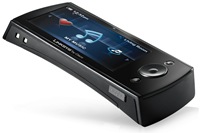 This time Linksys (by Cisco) has gone completely overboard in a Sonos-aspiring devices galore outfit leaving absolutely almost nothing left to want.
This time Linksys (by Cisco) has gone completely overboard in a Sonos-aspiring devices galore outfit leaving absolutely almost nothing left to want.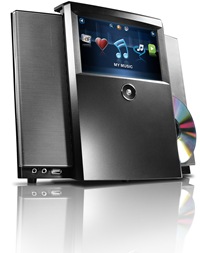 There are a few open questions, such as does it support flac and does the CD equipped station rip as well as play? If those two questions can be answered positively, I am sure Sonos will find themselves with a nice competitor here. Of course, the design is still a plus for Sonos which is definitely not the case for the Linksys. Nevertheless, this is an unusually complete package to introduce this suddenly.
There are a few open questions, such as does it support flac and does the CD equipped station rip as well as play? If those two questions can be answered positively, I am sure Sonos will find themselves with a nice competitor here. Of course, the design is still a plus for Sonos which is definitely not the case for the Linksys. Nevertheless, this is an unusually complete package to introduce this suddenly.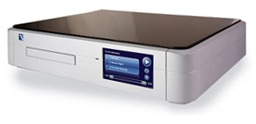 PS Audio are the people who gave us internet attached power conditioning so it is no surprise that they are the first to unveil a
PS Audio are the people who gave us internet attached power conditioning so it is no surprise that they are the first to unveil a 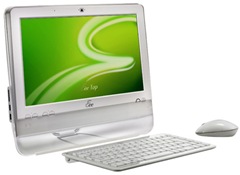 This is not a streamer. It is not even a media center of any kind. It is quite simply a PC and not a very impressive one at that – spec-wise; an Asus Eee sporting a 15.4” touch monitor and driven by a measly Atom processor. It does, however, have enough power to run a standard media player such as
This is not a streamer. It is not even a media center of any kind. It is quite simply a PC and not a very impressive one at that – spec-wise; an Asus Eee sporting a 15.4” touch monitor and driven by a measly Atom processor. It does, however, have enough power to run a standard media player such as 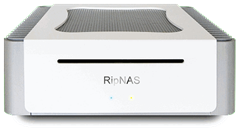 The RipNAS is not an audio streamer per this blog’s usual definition but a
The RipNAS is not an audio streamer per this blog’s usual definition but a 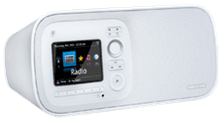 Sporting a wifi connection, wired ethernet and FM reception, this internet radio is very much that; an internet radio. A slick design centered around a pretty colour display and cool navigation controls paired with
Sporting a wifi connection, wired ethernet and FM reception, this internet radio is very much that; an internet radio. A slick design centered around a pretty colour display and cool navigation controls paired with  The long anticipated BeoSound 5 was announced yesterday. In terms of surprises the only one appears to be the release timing, in so far that it does not show much novelty over its competition in this segment. One major feature, though, is a system which based on metrics* is capable of selecting other songs similar to the one just finished. More of the same, as it is aptly named. I fear, however, that an equally fitting name could turn out to be Name that influence; when seeded with some middle of the road country tune it starts playing 2.000 hours worth of songs only distinguishing themselves from the seed track by lyrics and cover art.
The long anticipated BeoSound 5 was announced yesterday. In terms of surprises the only one appears to be the release timing, in so far that it does not show much novelty over its competition in this segment. One major feature, though, is a system which based on metrics* is capable of selecting other songs similar to the one just finished. More of the same, as it is aptly named. I fear, however, that an equally fitting name could turn out to be Name that influence; when seeded with some middle of the road country tune it starts playing 2.000 hours worth of songs only distinguishing themselves from the seed track by lyrics and cover art.  Well, I guess it can be turned off.
Well, I guess it can be turned off.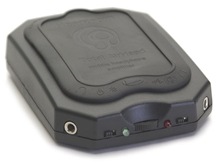 Headroom started in the early nineties making audiophile headphone amps. Today they boast a phenomenal line-up of more than 20 different
Headroom started in the early nineties making audiophile headphone amps. Today they boast a phenomenal line-up of more than 20 different 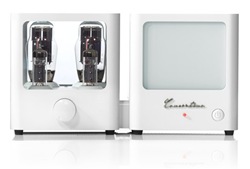 This one had me sold by looks alone. It doesn’t even come close to being an audio streamer. What it is, though, is one cool looking iPod dock.
This one had me sold by looks alone. It doesn’t even come close to being an audio streamer. What it is, though, is one cool looking iPod dock. The amplifier is built specifically to drive a set of accompanying speakers. The output transformer has been built into the speakers to keep the amplifier’s form factor down and thus its cuteness factor up.
The amplifier is built specifically to drive a set of accompanying speakers. The output transformer has been built into the speakers to keep the amplifier’s form factor down and thus its cuteness factor up.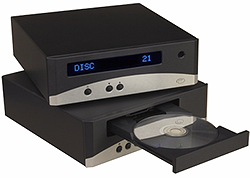 The Resolution Audio IXS is not included on the Resolution Audio web site yet, so this is pretty much a concoction of spottings.
The Resolution Audio IXS is not included on the Resolution Audio web site yet, so this is pretty much a concoction of spottings. In itself the 1U Server seems fairly uninteresting but with the Kaleidescape Music Player in the mix it immediately turns into a hefty competitor in the media server market – even if it may appear somewhat uneconomical [diplomatically speaking].
In itself the 1U Server seems fairly uninteresting but with the Kaleidescape Music Player in the mix it immediately turns into a hefty competitor in the media server market – even if it may appear somewhat uneconomical [diplomatically speaking].